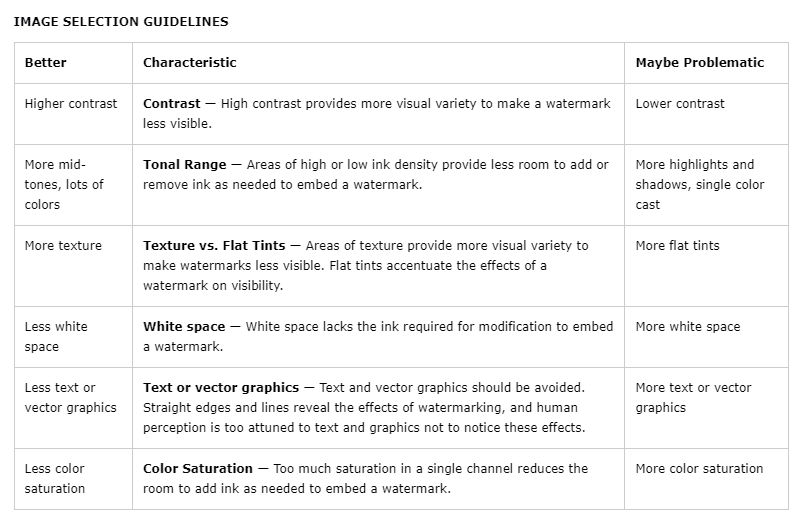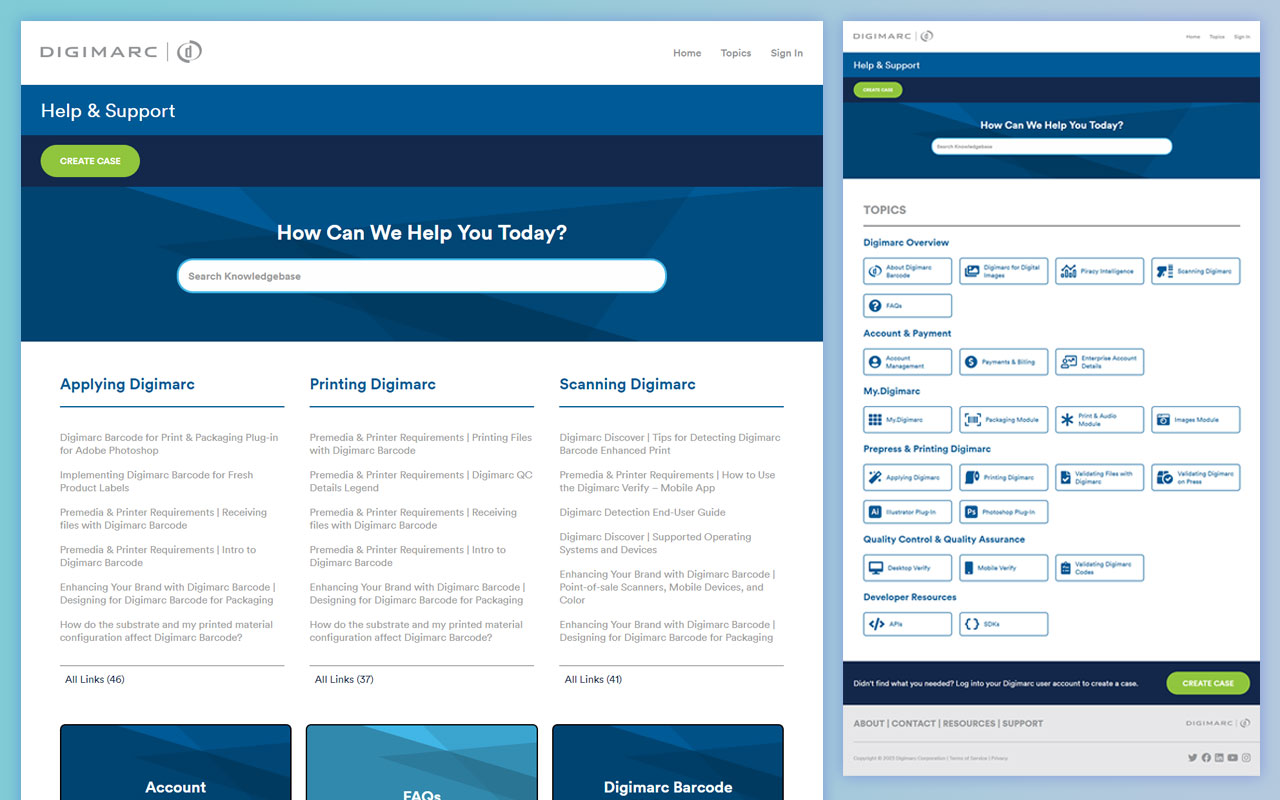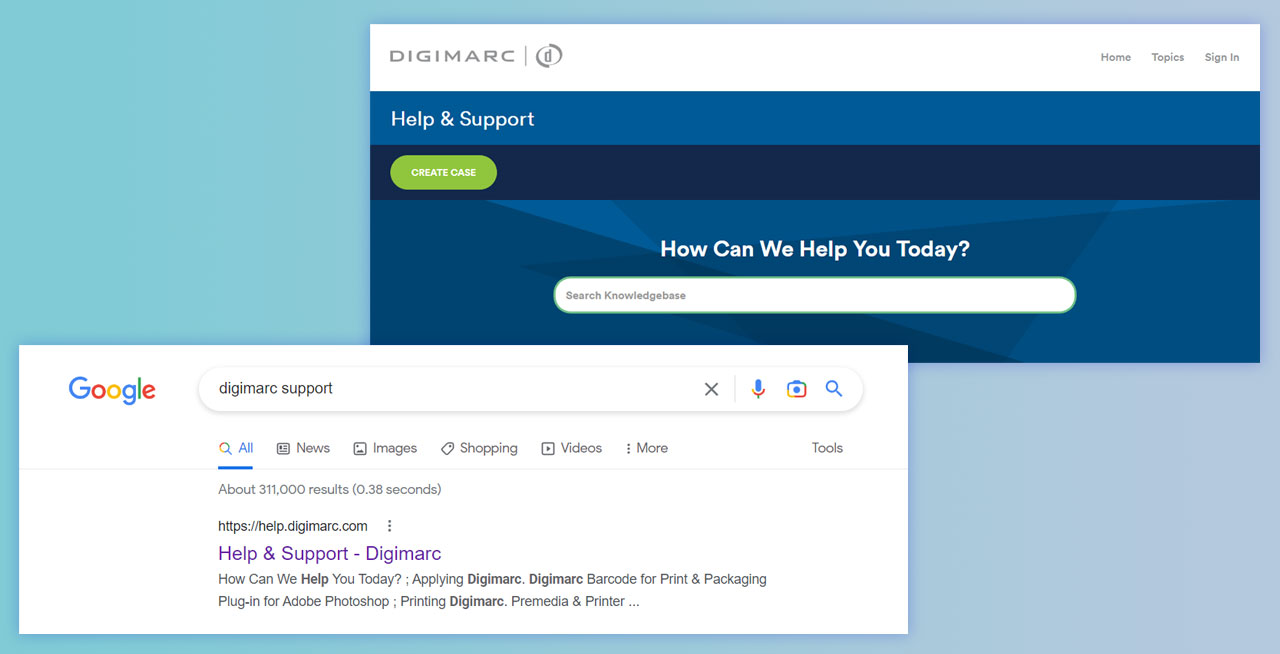Customer Support
TL;DR // Results
I led a significant transformation of Digimarc's customer support infrastructure.
- Removed support information from product pages to prevent undermining sales messaging, relocating it to a dedicated help site.
- Replaced outdated, hard-to-find PDFs with a searchable web-based knowledge base integrated into Salesforce, enhancing accessibility and content freshness.
- Implemented an account-based ticketing system, reducing spam and ensuring efficient routing of customer inquiries to appropriate support channels.
I ran interference and ended the game of hot potato various Digimarc divisions had been playing with support, creating appropriate housing and workflows for support. The most impressive part of this project is that it was all done in skunkworks with no officially dedicated resources.
The Problem
Help and support was always a challenge at Digimarc. There was a bit of a "chicken and egg" problem - support is obviously important, but it's manageable with CSRs when your customer base is still growing. To scale, support needs to be handled (to the degree possible) by tier ZERO - ie, a user can find answers on the web without requiring an employee's assistance.
When I started at Digimarc, support content for their services often existed on the very product pages meant to promote and sell them. About half the page content might be touting how great the product or service is, and the second half was a litany of potential problems a user could have with that product. Not ideal.
Here's an example of what some of that content, note how technical the content is and how it's referencing "problematic" areas of using the product.

The Fix
Collaborating with IT, product, marketing, and internal specialists, I led multiple iterations of our support content strategy. First, I removed support info from product pages to avoid introducing doubt during the sales process.
Next, I fully migrated support content off the corporate site. This allowed the main site to focus on sales, while the help site offered a dedicated, organized experience for existing customers.
A major hurdle was the company's reliance on outdated, hard-to-find PDFs. I tracked them down, converted them to web content, and worked with SMEs to keep everything current.
In the final version, I removed all support forms from the corporate site and shifted everything into our Salesforce knowledge base. This improved content management and connected support forms directly to our ticketing system.


Impact
The last iteration of the support content was a real triumph of teamwork. Our web content was the most complete it ever had been, and was more searchable both by users and search engines than it had ever been before. Support content was now easy to find on the web instead of hidden in out of date PDFs in emails. Users could easily search the help site independently for topics of interest. Our support forms were no longer easy to clog with spam, or with inquiries from non-paying users.
The most impressive part of this project is that this work was completed via skunkworks, since there was no dedicated customer support department. I worked hard to spearhead the effort, with resources volunteered from our IT, product, marketing, and our support specialist teams.